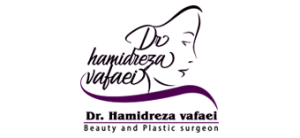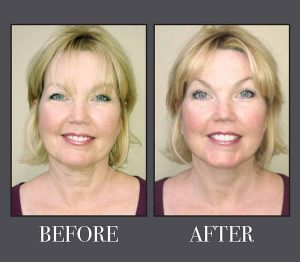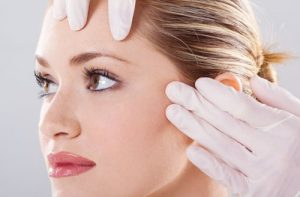Brow lift
A brow lift is an operation to smooth the area from your eye brows to your hairline. By repositioning soft tissue and skin of the brow and forehead, a brow lift freshens the appearance of the forehead, the brow and the area around the eyes.
How is a brow lift procedure performed?
Brow-lift procedures have evolved from open techniques to more complex short incision and endoscopic techniques. A brow lift usually involves incisions in the hair-bearing scalp, but sometimes incisions are made in the forehead and/or the upper eyelids.
- Open brow lift. Your surgeon makes a long incision across the forehead, either around the hairline or in one of the creases of the forehead, and lifts the skin away from the underlying tissues. The surgeon then loosens the muscles and removes fat. He or she removes any excess skin, pulls the remaining skin down, and stitches the brow into its new position. Other names sometimes used to describe open brow lift include classic, coronal or trichophytic brow lift.
- Endoscopic brow lift. Your surgeon will insert an endoscope (a long, thin tube with a light at the end attached to a video camera) through several tiny incisions in the scalp. This allows your surgeon to see and work on the various internal structures of the forehead. The endoscopic technique requires very minimal incisions, but it may not be equally beneficial for all patients.
- Limited incision technique. This hybrid technique of both procedures is non-endoscopic with limited incisions. It uses a small portion of the ends of the coronal technique incision to elevate the outside part of the eyebrows under direct vision without an endoscope. The resulting scars are hidden in the temporal hairline, even in balding men who have little temporal hair remaining. While this procedure does not address the center area of the brow, it can reduce wrinkles at the corners of the eyes, commonly referred to as ‘crow’s feet.’ Since many forehead-lift procedures are performed with an upper blepharoplasty, the upper eyelid incisions are used to complete the forehead-lift procedure by treating the ‘frown’ lines between the eyebrows and raising the inside part of the eyebrows.
The type of brow lift you undergo will be based on your facial features and aesthetic preferences. The goal of your aesthetic plastic surgeon and the entire staff is to help you achieve the most beautiful and natural-looking results, as well as to make your surgical experience as easy and comfortable as possible.
How do I prepare for a brow lift procedure?
- If you smoke, your surgeon will ask you to stop at least six weeks before your surgery. Smoking greatly increases the risk of complications and slows the healing process.
- You may have to limit alcohol consumption and avoid certain medications.
- If you regularly take aspirin or another anti-inflammatory drug, your surgeon will ask you to stop taking these for a period before surgery. These drugs can cause increased bleeding.
- Regardless of the type of surgery to be performed, hydration is very important before and after surgery for safe recovery.
- If your hair is short, you may want to grow it out to cover any scars.
- Make arrangements to be driven to and from surgery on the day of your procedure.
- You should have someone to take care of you on your first night home and, if possible, the first two days following surgery.
- Fill all prescriptions before surgery.
- Set up your recovery area ahead of time. You should have easy access to fluids, prepared meals, pillows to elevate your head, and reading materials and entertainment.
- Prepare ice packs. Frozen vegetables work well to reduce post-operative swelling.
What happens during brow lift surgery?
During your operation, your surgeon will shorten the muscles in your brow through an incision in your hairline. The procedure lifts the forehead area and repositions your eyebrows for a younger look. Any scar will be hidden in your hair.
You may have the option of keyhole surgery. In this case, your surgeon will access the area through tiny incisions on your hairline.
Brow lift surgery is usually performed under general anesthetic and you may need to spend one night in the hospital. You may have bandaging on your forehead to protect any incisions. There may be very thin tubes (drains) inserted in the wound to drain any excess fluid or blood. These will be removed in 2-3 days.
You may have bruising and swelling in your forehead and upper eyelid area. The area may be very sensitive but you will be given pain relief medication. You may be asked to remain upright and to avoid bending over or straining for the first few days.
What are the risks of a brow lift?
The decision to have plastic surgery is extremely personal. You will have to decide if the surgery will achieve your goals and if the risks and potential complications of a brow lift are acceptable.
You will be asked to sign consent forms to ensure that you fully understand the procedure and any risks and potential complications.
Brow lift surgery risks include:
- Anesthesia risks
- Bleeding
- Loss of hair around the incisions
- Elevated hairline
- Eye irritation or dryness
- Facial asymmetry
- Facial nerve injury with weakness or paralysis
- Fluid accumulation
- Infection
- Numbness or other changes in skin sensation or intense itching
- Pain, which may persist
- Poor wound healing
- Possibility of revision surgery
- Skin loss
- Unfavorable scarring
- Rare risk of deep venous thrombosis (blood clots) that can result in pulmonary embolism with chest pain, shortness of breath
These risks and others will be fully discussed prior to your consent. It’s important that you address all your questions directly with your plastic surgeon
Are you a good candidate for a brow lift?
The following are some common reasons why you may want to consider a brow lift:
- The outside of your brow sags, resulting in a sad expression.
- The central portion of your brow hangs down, making you look angry
- You have frown lines between your eyes.
- If you are a female and you are unable to apply makeup on the upper eyelid because the surface area has been obscured by drooping tissues as you have aged.
- If you gently lift the skin above your eyebrow into a pleasing position and it eliminates most of the excess skin in your upper eyelid, a brow lift may be right for you.
Rely on an evaluation from a board-certified plastic surgeon to find out if you would benefit from a brow lift, blepharoplasty, or both procedures. If you are in good general health, have a positive attitude and realistic expectations, you are most likely a good candidate for a brow lift and eyelid surgery procedures.
After-care advice
Recovery following brow lift varies from patient to patient and the surgeon will advise you on how long you will need to be off work. Usually, this is between 1-2 weeks. Patients should avoid strenuous exercise for up to two weeks.
Bruising and swelling is commonplace, though there are ways to reduce swelling, such as sleeping in an elevated position with 2-3 pillows for the first week and gently applying ice packs to the affected areas. Mild pain and discomfort for a few days after the procedure is also normal, and patients will be prescribed with pain medication to ease this. However, aspirin and ibuprofen type painkillers should not be taken as they can sometimes increase the risk of bleeding or bruising.
Patients are advised to refrain from using hair styling products, which could irritate the surgical area. Baby shampoo may be used to wash the hair, but the areas much be thoroughly dried so as to prevent bacteria which can cause infection. Try not to rub areas dry, instead of patting gently.
Stitches or staples will be removed around ten days after the surgical procedure and a follow-up consultation will be arranged to review progress and ensure correct healing is taking place. It is vital that patients attend their check-up meeting.
The degree of scarring after brow lift surgery will depend upon the technique used but is normally minimal. With the endoscopic brow lift method, the scars are hidden beneath the natural hairline or in the patient’s forehead creases. Scars should fade within 3-6 months of the surgery, while a temporary loss of sensation or numbness may also occur for several months post-surgery.







Leave a Reply
Want to join the discussion?Feel free to contribute!